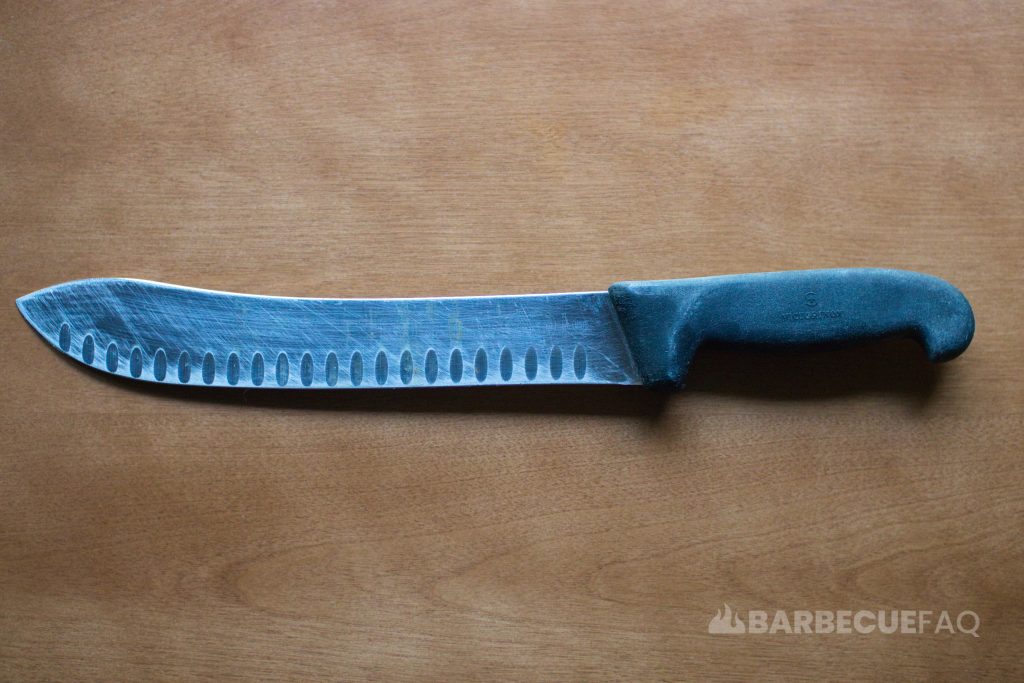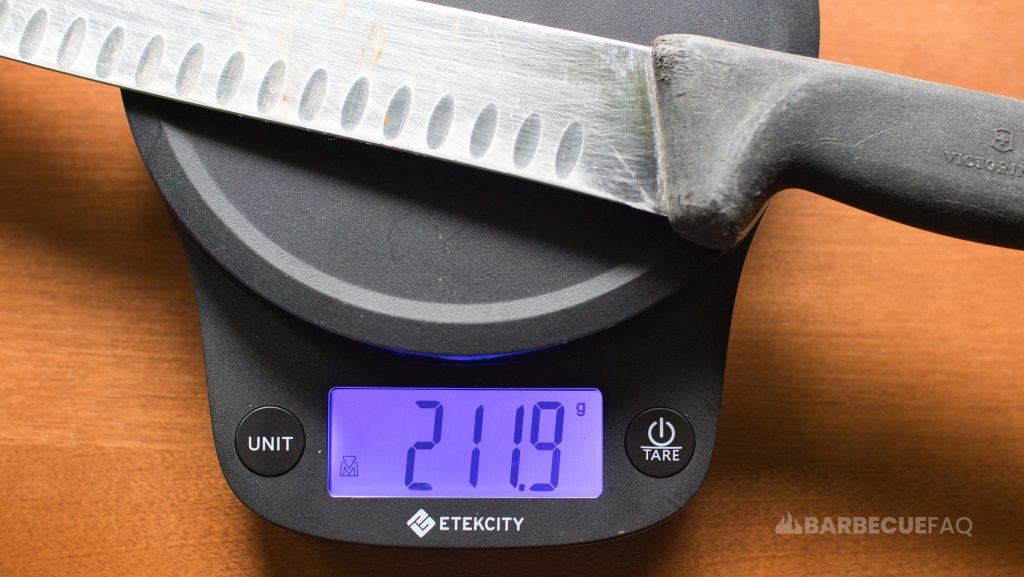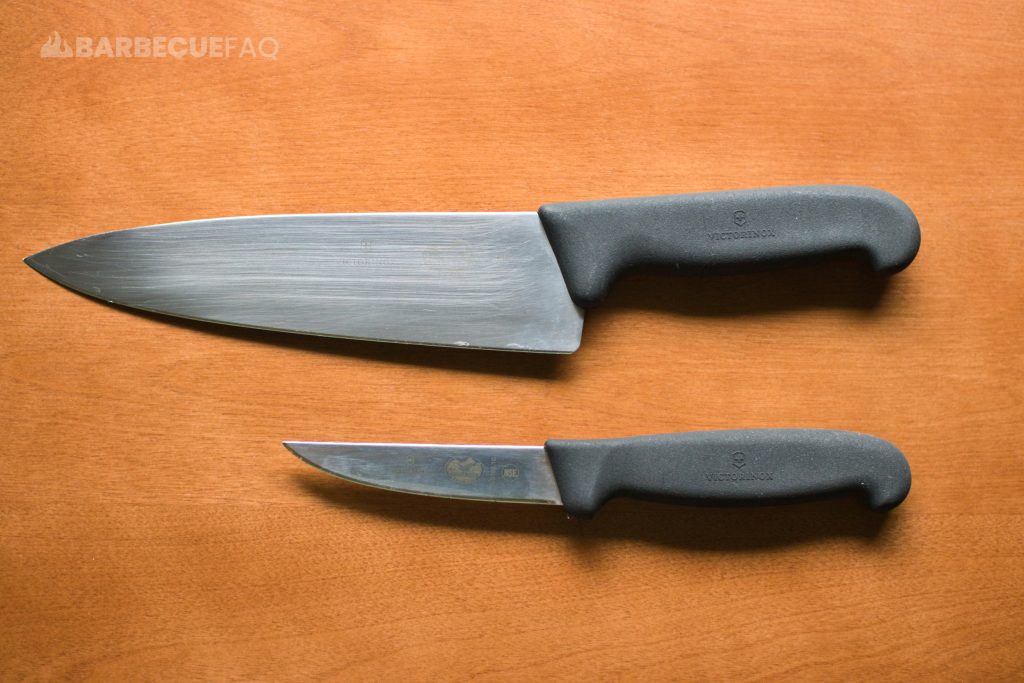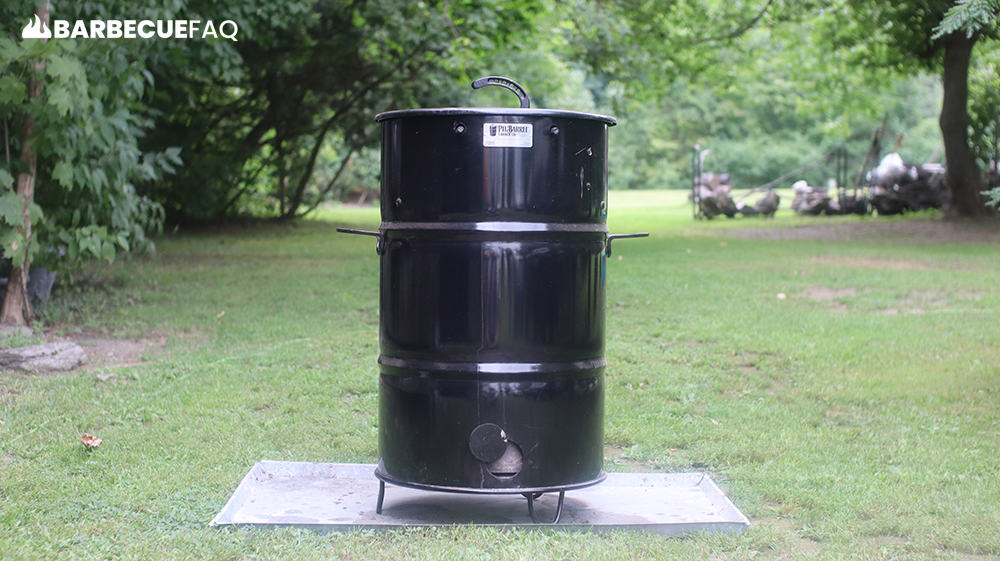Chef = A person performing common “knife tasks” in a kitchen.
Butcher = A person who processes whole animals into primal, subprimal, and retail cuts.
Difference in Blade (Shape, Weight, More)
To preface: It’s important to note that all knife brands are different. They’ll have standardized lengths but things like materials and manufacturing processes are different.
The blade shape of the Chef knife and Butcher knife are completely different.

The Chef’s knife has a cutting edge that features a rounded taper with a sloping edge.
This taper allows for the characteristic rocking motion that makes chopping and slicing efficient.
When using a cutting board, the tapered portion of the blade is kept in-contact and then the knife is rocked towards the heel.
The blade also comes to a point/tip that allows for precision cutting when necessary.
Blade Shape of a Butcher’s Knife
A Butcher’s knife has a straight edge like you’d find on a slicing knife that then comes to an upswept belly that you’d find on a skinning knife.

This curve is useful for dressing an animal carcass and allows the hide to be removed without puncturing it. It also allows the Butcher to maneuver around bones.
The length of the blade allows for the Butcher to create clean slices and makes trimming easier.
Blade Thickness
While materials differ (meaning weight differs), typically a Butcher knife is thicker than a Chef’s knife.
Here’s the thickness of the blades next to each other:

This thickness means that Butcher knives typically weigh more than Chef knives.
Here’s the weight of my Father’s Butcher knife:

Here’s the weight of my Chef’s knife:

Again, both are made by the Victorinox brand and feature their Fibrox handles.
The Butcher’s knife weighs 48.3 grams more than the Chef’s knife.
Why Not Just Use a Chef’s Knife for Everything?
As I hope is evident from the above, you technically could.
Often, the reason “secondary” or “specialized” knives are used by Chef’s or even Individuals at home is because they tend to perform certain tasks better.
For instance, you could peel an apple with a Chef’s knife but 8″ or 10″ of knife is a lot of knife for this task. Rather, a paring knife is a much smaller knife (2.5″ – 4″) and is designed for that purpose, ie. peeling the skin of fruits.

Say you’re a Baker or someone who makes a lot of homemade bread.
While you could certainly slice the bread with a chef’s knife, a bread knife is designed to cut through bread via the serrated edge.

Another good example is a Butcher’s knife; A knife designed to take on the the tasks of a butcher.
You get the gist.
Secondary and specialized knives are designed to fit your individual needs and to make certain tasks easier.
“Butcher’s” Knives Aren’t Standardized
Not all Butcher’s Reach for the same knife.
Some might reach for a breaking knife or a cimiter.

Technically a “butcher” knife is whatever the individual Butcher prefers to use.
The first knife in the above photo is just the “traditional” or “English variant” as some tradespeople might call it.
Note: Butcher Knives are NOT Cleavers
When most people hear the term “Butcher knife” they almost instantly think of the Cleaver.
This is due to mainstream media associating a butcher-like caricature with the knife.

While Butcher’s do use cleavers – they’re often not using it as their Butcher Knife.
Cleavers aren’t really used to cleave through large bone; That task is better left to a bone saw or bandsaw. Rather, cleavers work well for small game like poultry.
Personally, when it comes to breaking down chickens, I pretty much only use a cleaver.
Cleavers can also work especially well for fish.




